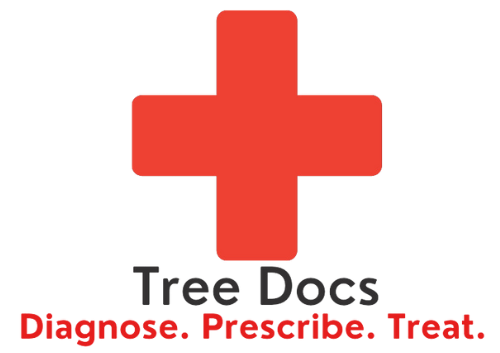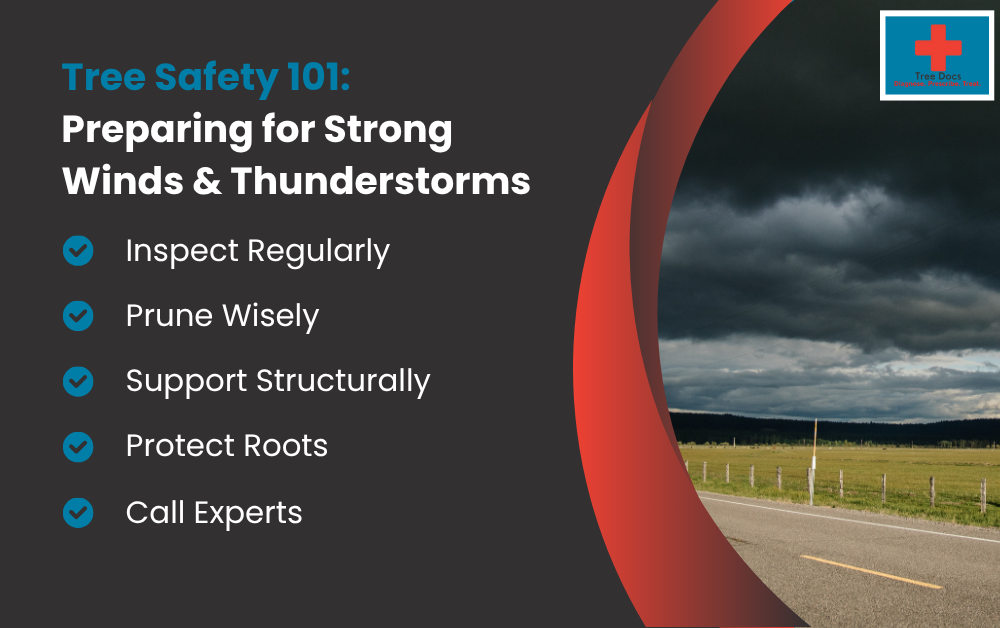When the skies darken and the winds pick up, your trees become more than just a beautiful backdrop to your home — they can quickly turn into major hazards. From broken branches to complete uprooting, storms have a way of revealing hidden weaknesses in your landscape. That’s why tree safety isn’t just a seasonal concern; it’s something every homeowner should prioritize, especially in areas like Ohio where thunderstorms and high winds are all too common.
In this guide, we’ll break down exactly why tree safety matters, how you can spot problems before storms hit, practical ways to prepare, and what to do after the storm clears. Think of this as your go-to manual for keeping your family, home, and yard safe all year long.
Why Tree Safety Should Be a Priority Before Storms
Risks to Your Home & Family
A mature tree is a wonderful thing — it shades your house, beautifies your yard, and can even increase property value. But if it’s compromised by disease, pests, or structural weaknesses, it can also become a serious liability. Falling branches or toppled trees can:
- Smash roofs, fences, cars, or outdoor living spaces.
- Knock down power lines, leading to outages or fires.
- Cause injuries to people or pets caught underneath.
Even minor storms can turn small unnoticed issues into big disasters. Paying attention to tree safety ahead of time means you’re protecting not just your property, but your loved ones.
Common Tree Hazards in Storms
Most homeowners think the biggest danger comes from huge, old trees. While mature trees are more prone to breakage if they’re unhealthy, younger trees can also fail if they have poor root systems or structural defects. Some typical risks include:
- Weak or dead limbs that snap under high winds.
- Root problems that cause trees to lean or suddenly uproot after heavy rains soften the ground.
- Hidden decay or disease, which weakens the trunk or major limbs.
That’s why it pays to know what to look for — and when to bring in an expert.
How to Inspect Your Trees for Storm Vulnerabilities
Signs Your Tree Could Be a Risk
Not sure what a problem tree looks like? Some signs are obvious, others are easy to overlook. Watch for:
- Cracks or splits in the trunk or major branches.
- Hollow spots, mushrooms, or decay on the trunk — all signs of internal rot.
- Dead or hanging limbs, especially over driveways or roofs.
- Soil heaving at the base (where it looks like the ground is cracking or lifting) indicating shifting roots.
- Leaning trees, particularly if the lean seems to have gotten worse after recent rains.
If you see one or more of these, your tree might not handle the next storm well.
What Homeowners Can Check Themselves
You don’t have to be an arborist to do a basic tree safety inspection. Walk your yard slowly and look:
- Up into the canopy for deadwood or branches tangled together.
- Around the trunk for peeling bark, holes, or fungal growth.
- At the root flare (where the trunk meets the ground) for exposed or cracked roots.
Binoculars are handy for scanning the tops of tall trees. Make notes or take photos so you can monitor changes over time.
When to Call an Arborist
Some issues are hard to diagnose from the ground. If you spot any of the above — or simply feel unsure — it’s time to call in a professional. Certified arborists can identify subtle problems, recommend solutions like cabling or selective pruning, and let you know if a tree truly poses a danger.
Preparing Trees for Strong Winds & Thunderstorms
Pruning for Tree Safety
Pruning isn’t just about looks — it’s one of the most effective ways to boost tree safety. Removing dead, diseased, or structurally weak branches:
- Reduces the weight on heavy limbs.
- Lowers wind resistance, so storms are less likely to tear limbs off.
- Encourages healthy, balanced growth.
A properly pruned tree is less likely to break or uproot during strong winds. Remember, heavy pruning should be done by trained professionals who know how to maintain the tree’s natural shape and strength.
Structural Support Options
Some trees are too valuable or established to simply cut down, even if they have minor structural concerns. That’s where cabling and bracing come in. These systems use flexible steel cables or rods to support key limbs, reducing the risk of splitting under stress.
Think of it like putting a supportive brace on a weak joint — it doesn’t make the problem vanish, but it can extend the tree’s life and safety dramatically. A certified arborist can evaluate if your trees are candidates for these supports.
Soil & Root Care
Don’t overlook what’s underground. Healthy roots are your trees’ anchor in stormy weather. You can support them by:
- Mulching properly — 2-3 inches deep, kept away from the trunk flare.
- Avoiding heavy equipment or constant foot traffic over root zones, which compacts the soil and cuts off oxygen.
- Making sure soil drains well; standing water can suffocate roots.
The stronger the roots, the more stable your trees will be when winds pick up.
Post-Storm: Checking for Damage & Keeping Safe
Immediate Steps After a Storm
Once the storm passes, resist the urge to rush outside, especially if there are downed power lines or large limbs hanging precariously. Check for:
- Large branches that have broken but are still caught in the canopy (called “hangers”).
- Leaning trees or newly exposed roots.
- Fresh cracks in the trunk or main limbs.
Stay clear of anything tangled in electrical lines and call your utility provider right away.
Assessing for Hidden Damage
Not all storm damage is obvious. Some trees develop stress fractures or internal cracks that aren’t immediately visible. Over the next few days or weeks, keep an eye out for:
- Oozing sap or sawdust piles around the base, which can signal pests exploiting storm wounds.
- Leaves suddenly wilting on parts of the tree.
- Bark that starts to peel or slough off.
When in doubt, schedule a post-storm tree safety check with an arborist.
Why a Professional Assessment Matters
Even if a tree looks okay from the ground, professionals can detect subtle warning signs. They may use tools like resistographs (which measure wood density) to find hidden decay or evaluate whether a tree is structurally sound. Catching problems early means you’re far less likely to face costly emergency removals later.
Tree Safety Tips for Every Season
Regular Maintenance Matters
Storm prep isn’t a one-time chore. Trees are living organisms that grow, adapt, and sometimes weaken over time. An annual inspection — even in calm weather — is your best insurance policy.
Building Tree Resilience Long-Term
Strong, healthy trees are your best defense against storm damage. You can set them up for success by:
- Planting the right species in the right place. Avoid putting large canopy trees too close to your house.
- Watering deeply during dry spells, especially for young trees.
- Watching for pests and diseases that can weaken wood.
Quick Tree Safety Reminders
- 🌳 Keep mulch 2-3 inches deep, away from the trunk.
- ✂ Prune out deadwood and crossing branches.
- 👀 Watch for mushrooms at the base — they often mean internal decay.
- 📝 Document changes each season with photos so you can track new tilts, cracks, or canopy thinning.
Prioritize Tree Safety Before It Becomes an Emergency
Storms are inevitable — but being blindsided by falling branches or uprooted trees doesn’t have to be. By taking tree safety seriously with regular inspections, smart pruning, and professional support, you protect your family, your home, and your beautiful landscape.
If you’re concerned about how your trees will handle the next big storm, don’t wait until it’s too late. Contact us today for a comprehensive tree safety assessment. We’ll help keep your yard sturdy, healthy, and ready for whatever Ohio weather throws your way.



